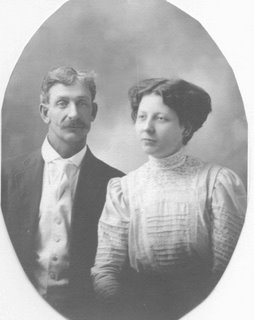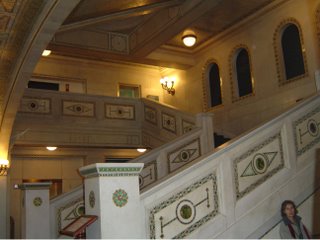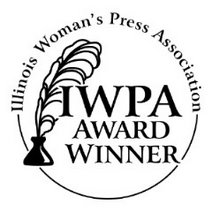When my former neighbor and long-time friend Margot Wallace told me that she had written a book entitled
Museum Branding (AltaMira Press, 2006), my first question was, "What's that?" Margot teaches at Columbia College, Chicago, and she worked in advertising/marketing for many years before earning a master's degree and becoming a teacher in her field. She's good at what she does. She cheerfully explained to this outsider that museums need identities, or brands, to promote their institutions to visitors and benefactors. The book's subtitle is "How to Create and Maintain Image, Loyalty, and Support." O.K. Museum branding makes sense.
Still, when I encountered Jeninne Lee-St. John's article, "It's a Brand-You World," in the November 6 issue of
Time, I was startled to learn about "personal branding." According to Ms. Lee-St. John, personal marketing consultants apply "the language, philosophies and strategies of Madison Avenue to the brand that is you." According to the experts she quotes, we need to be "packaged," our images overhauled, in order to get ideal jobs or to find life partners. "The majority of [job-seeking] kids coming out of college are essentially generic," according to consultant D.A. Hayden of Hayden-Wilder. As a long-time college professor, I question that, but I'll concede that some graduates may need advice: relax, don't say "uh" or "like" so often, dress appropriately, and so forth. But do they need to pay $2,950 for Hayden-Wilder's "Illumination" branding package? I don't think so. There's even a New York company, PersonalsTrainer, that will rewrite your on-line personals or dating service ad for $159.95!
I don't especially need or want either a job or a date these days, but this article interested me for two reasons: a short-lived experiment with a senior on-line dating site (no dates), and the publication of my book,
Reinventing Myself: Memoirs of a Retired Professor, earlier this year.
I wasn't serious about the dating site for senior citizens. I just wanted to explore, and I wouldn't have minded meeting someone in my age group for coffee and conversation if, indeed, there are any seventy-ish men out there who are interesting, single, straight, healthy, and not looking for a housekeeper, cook, and/or nurse. I was truthful. I did not claim to be beautiful or vivacious or eager to find romance. The two or three tentative responders lost interest quickly, as did I. And when one mentioned sex as his main interest or activity, I concluded that he must hit the Viagra a bit too hard. Possibly a personal branding consultant could have improved my image and found me a date, but I might have told the guy to get lost. There's not much wrong with being single.
Then, there's my book. I've learned about marketing and publicity packages that cost many thousands of dollars: possible radio and TV interviews; book tours; public appearances. How about an image consultant for an "extreme makeover"? A media consultant to improve my radio or TV performance? No sale. My book is mainly for seniors, whom I assume to be quite oblivious or resistant to such efforts, and I do not expect it to be a best seller. Its readers have been appreciative, but it's a book with a limited audience. Why waste money on the impossible?
I've grown up believing that I should be myself and not care what others think. I'm an individualist and a loner. Those qualities have never made me popular, and perhaps they helped make me the depressed recluse I became for a while after my husband died; some reinvention was necessary. I've improved me teeth and my hair, and more importantly, become a volunteer, joined writers' groups, and made a few new friends. I've attempted to market my book on line (where many seniors never venture). But as for aggressive and expensive personal branding? I don't think so. I wouldn't mind meeting a few new people or selling a few more books, but I won't buy a new image in order to do so. I know who I am, and I'm content with the imperfect brand that is me.
Copyright 2006 by Marlys Marshall Styne
 Here are my maternal grandparents, Edward Samuel Uhl, 1869-1928 (son of Joseph Alexander Uhl and Harriett Bryant Uhl) and Minnie Louise Blanchard Uhl, 1889-1978 (daughter of William Blanchard and Sarah Ludy Blanchard).
Here are my maternal grandparents, Edward Samuel Uhl, 1869-1928 (son of Joseph Alexander Uhl and Harriett Bryant Uhl) and Minnie Louise Blanchard Uhl, 1889-1978 (daughter of William Blanchard and Sarah Ludy Blanchard).





















